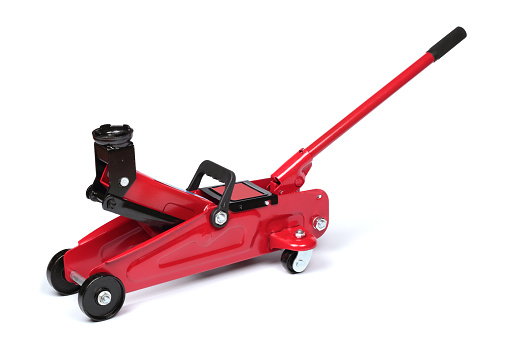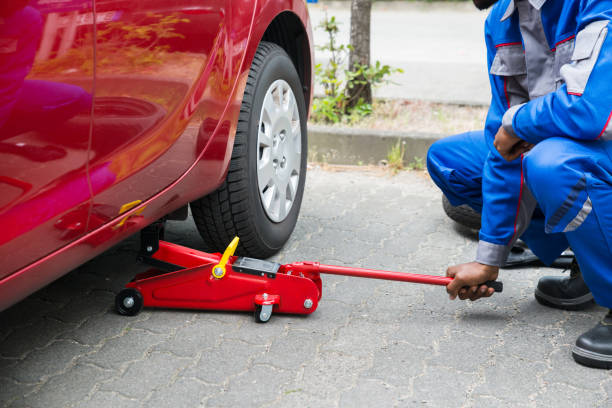Summary
– What is a hydraulic jack?
– Hydraulic rolling jack: how does it work?
– Maintenance of the hydraulic jack
Having to partially lift a car for maintenance work (such as installing or removing wheels or replacing brake pads) is not always comfortable with a mechanical jack. What would you say instead of acquiring a hydraulic jack? More practical and safe, it is now accessible to everyone. It’s a wise option that will make this type of car repair much less restrictive!
What is a hydraulic jack?
The particularity of the hydraulic jack is that it is mobile. It moves and slides under the vehicle thanks to four metal or plastic wheels, much quieter and less aggressive for the surface.
It is made up of different elements:
– bolted metal frame on which the casters are fixed.
– metallic mobile arm, one end of which rotates on the frame, and the other is the lifting support point. It is composed of rotating support on the jack arm, often topped with rubber protection (at least recommended).
– hydraulic part consists of a pump and a jack placed between the chassis and the mobile arm.
– one or two controls to operate the hydraulic pump and its cylinder:
◦ hand control, with a tube printing a pumping movement;
◦ foot control (optional) at the pump’s base, allowing a faster approach lift of the jack.
– a command to lock and lower the jack, often by the tubular handle’s rotation.
Hydraulic rolling jack: operation

Practical advice: safety first
Lifting a vehicle is a delicate and dangerous operation, especially when you have to crawl under it. It is essential and mandatory to ensure your safety by installing a jack stand, which will prevent the vehicle from collapsing if the jack fails.
The implementation of hydraulic rolling jacks is quite simple. Here are the instructions for use.
Lifting the vehicle
To lift your car safely:
– Slide the jack under the vehicle at the support point provided by the manufacturer (often a triangle-shaped arrow appears on the underside of the bodywork);
– lock the jack by turning the handle counter-clockwise;
If the jack is equipped with a pedal, pump with the foot until contact with the chassis, then complete the lift with the manual handle.
Lowering the vehicle
To then lower the vehicle:
– turn the hand tube clockwise until the cylinder is in the rest position;
– prefer a flat and hard surface;
– wedge the wheels opposite to the lift (the hand brake does not need to be applied);
– always ensure that the raised vehicle is held in place by one or more supports.
Safety tip: be careful never to slide under a vehicle when there are no stands!
Maintenance of the hydraulic jack
Although it requires little maintenance, vigilant maintenance is essential. Regular monitoring is necessary:
– check the tightness of the nuts and bolts;
– check for hydraulic leaks;
– In the event of a leak, replace the seals concerned, if possible, or the entire jack;
– for replacement: add the oil recommended by the manufacturer or, failing that, oil for jacks (example: type Hydro HV15).
Caution: stop using a jack that no longer holds the pressure (in the long term, a progressive decrease in the jack is usually noted).
Note: above 10 tons of load, hydro-pneumatic jacks are used.
Please remember to share your experience below. Also, do not hesitate to request a topic of your particular interest.
You can read more here:


